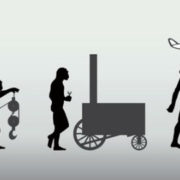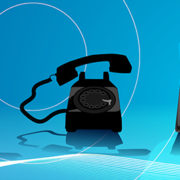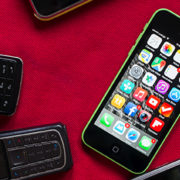How The Way We Watch Television Has Evolved
Can you remember a simpler time before Netflix and Hulu existed? TV has been in American households for almost a century, but the way we watch television has evolved at such a rapid rate, it’s almost difficult to remember how inconvenient VCR’s, antennas, and cable boxes were. So let’s take a glimpse into the past at some of the innovations that have been made with how we watch TV.
Invention
Televisions were available commercially in America by 1939.
Fact: In 1939, there were fewer than 1,000 TV sets in use, with only 441 lines of resolution!
Mass Production
TV didn’t actually become mainstream until around 1948, once people returned from war, and the American economy was stronger than ever. Radio was still widely used, but TV was starting to be adopted as another form of entertainment.
Fact: By 1953, there were roughly 25,000,000 televisions in use.
Color TV
Though it was invented in 1953, color television didn’t become standardized until the late 60’s once networks adapted to the format.
Fact: By 1966, there were over 53,000,000 Televisions in use – 93% in American homes.
Cable
The 70’s brought about change with the way TV was watched, including the birth of HBO, introduced in 1972. Over the next decade, more and more basic cable channels were available with networks like MTV, Nickelodeon, VH1, and Comedy Central. The growing options for home entertainment served as a model for how we consume media to this day.
Fact: In 1977, there were over 12 million cable subscribers.
Stereo Sound & VHS
Around the 1980’s, stereo sound was added to broadcast television, which was a catalyst for creating better home theaters.
Another addition was the (sometimes frustrating) VHS machine, which allowed viewers to record shows for later viewing.
Fact: in 1985, only 14% of households with TV’s had a VCR. By the mid 90’s, roughly 80% of households owned one.
DVD & Flat Screen TV’s
In 1997, DVD discs and players were launched, and changed the entire home video landscape. DVD’s offered higher quality picture and sound, eventually killing off the VHS tape.
It was only in 2006 when flat screen TV’s became an industry standard. By 2006, flat screen TV’s were mass produced, dropping the price per unit, and allowing more consumers to purchase this technology.
Fact: 2005’ film – A History of Violence – was the last film released on VHS
Smart TV
Current day TV technology allows us to watch TV shows and movies quickly and with the greatest of ease now. We can rent or stream shows and movies through Netflix, Hulu, iTunes and through countless other apps available.
The Future
TV technology will continue to evolve quickly and provide us with some amazing ways to watch the TV shows and Movies we’re excited to see. Microsoft already allows us to control our TV’s through voice commands with its revolutionary XBOX ONE console, and technology companies have plans for more affordable ultra high definition TV’s, including 4K UHD TV’s which feature the highest resolution currently available, for the most realistic viewing possible.











